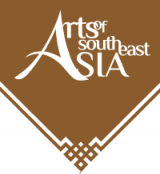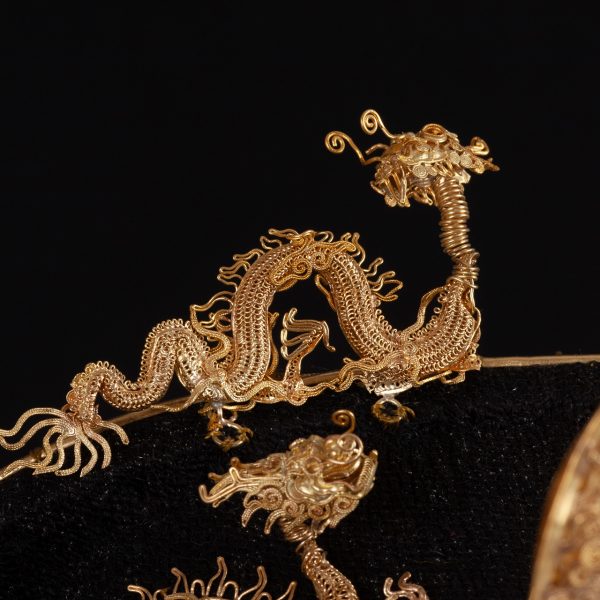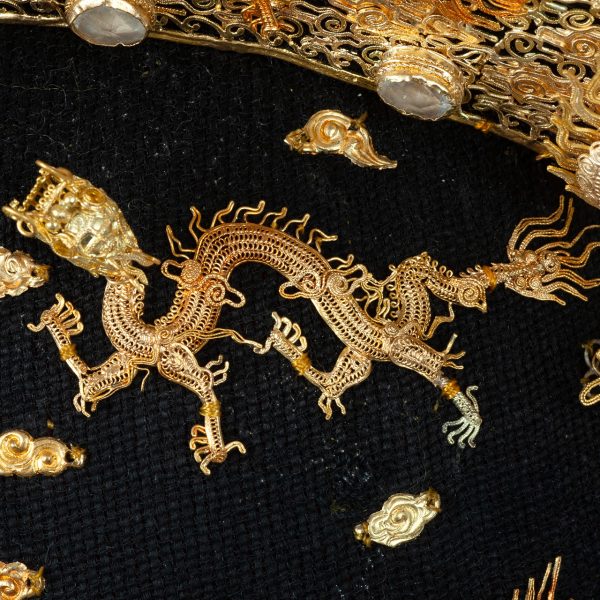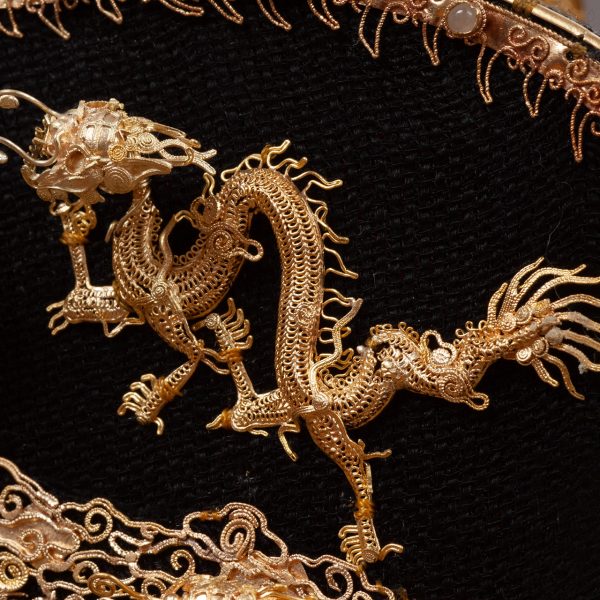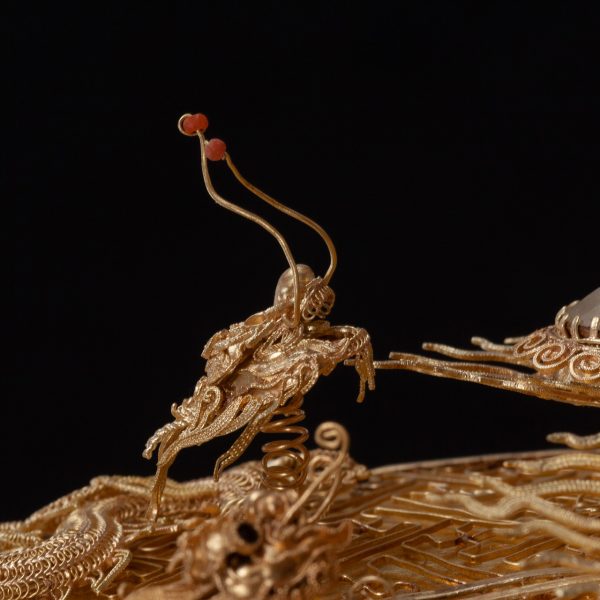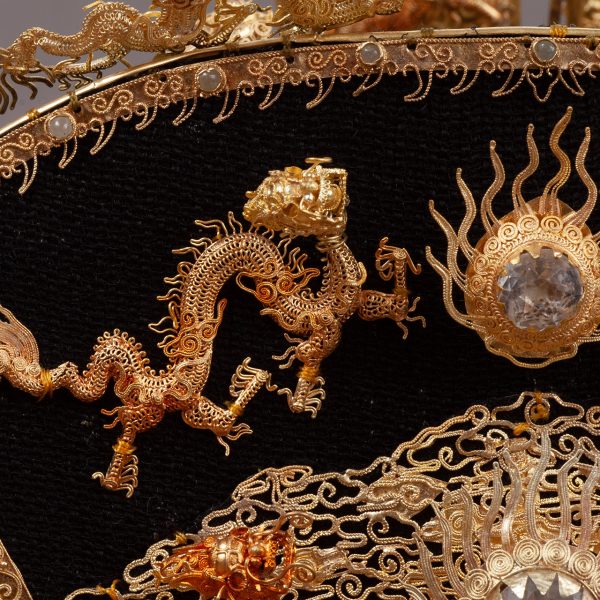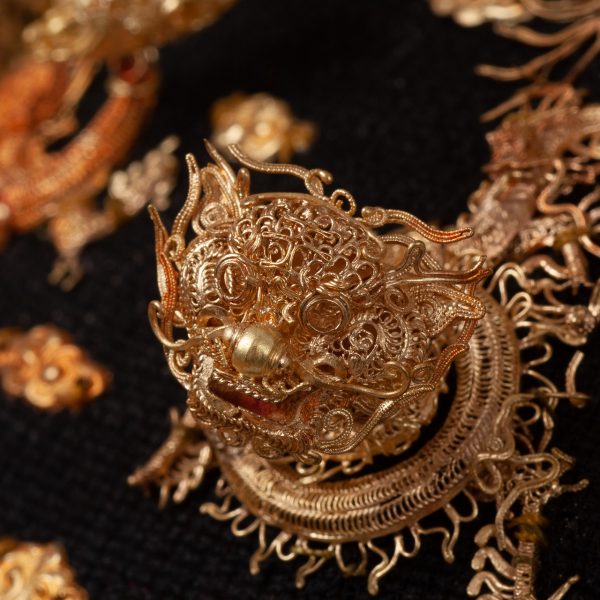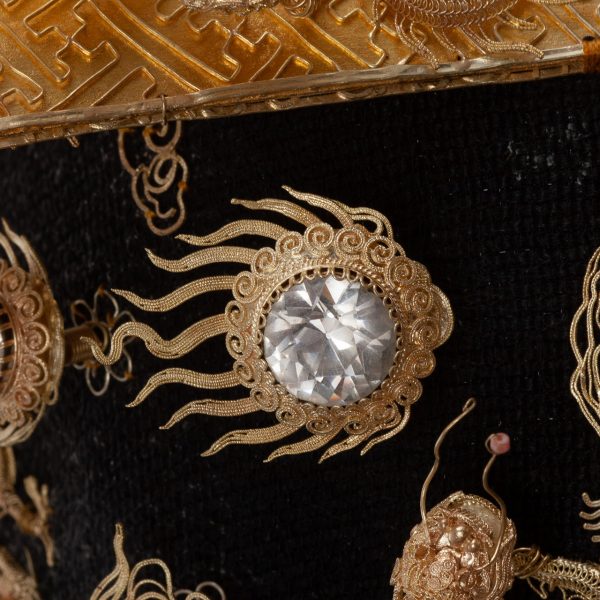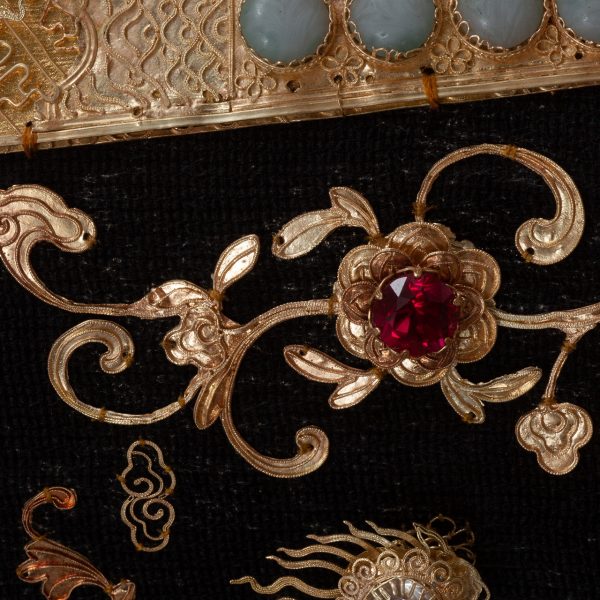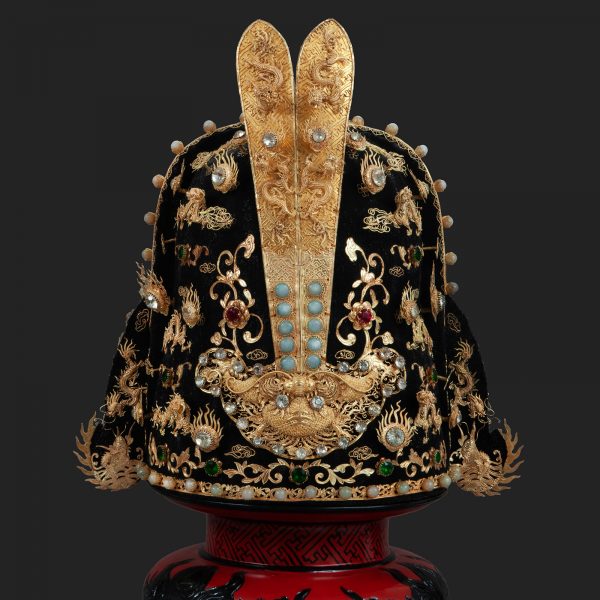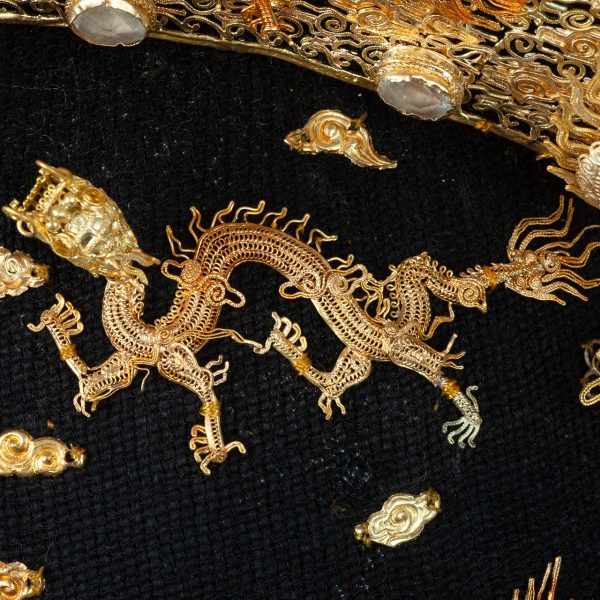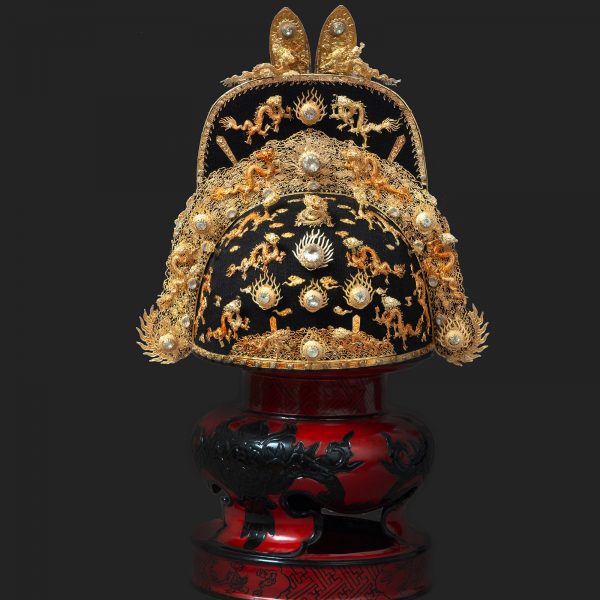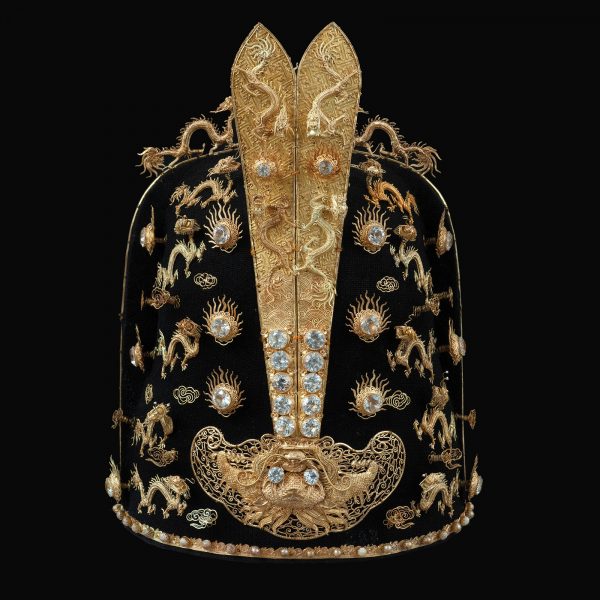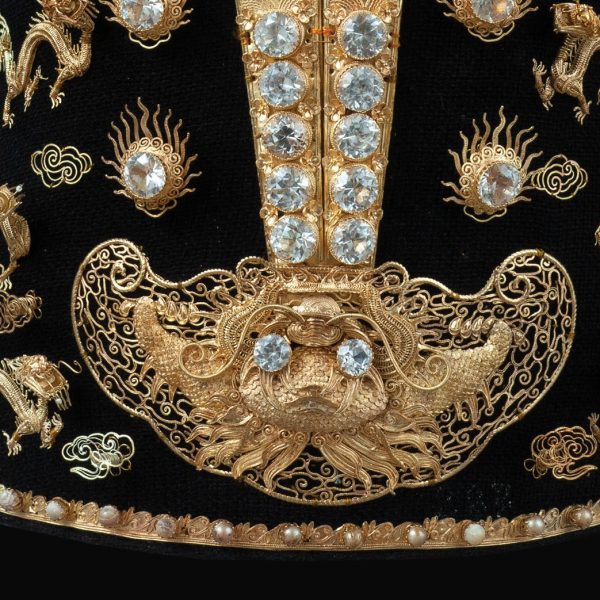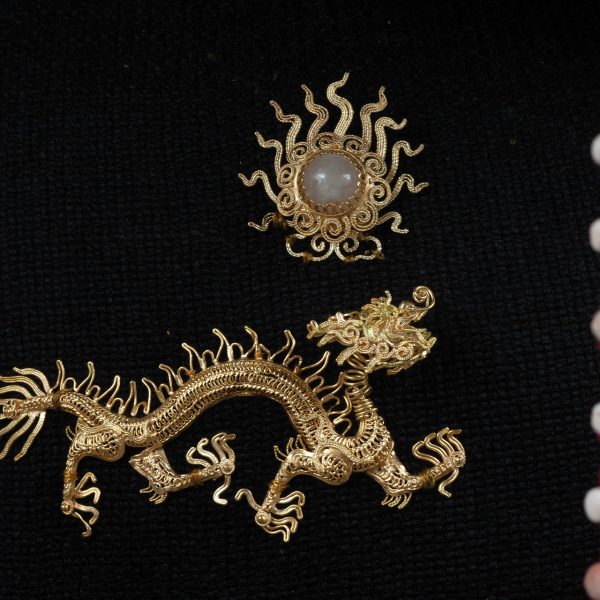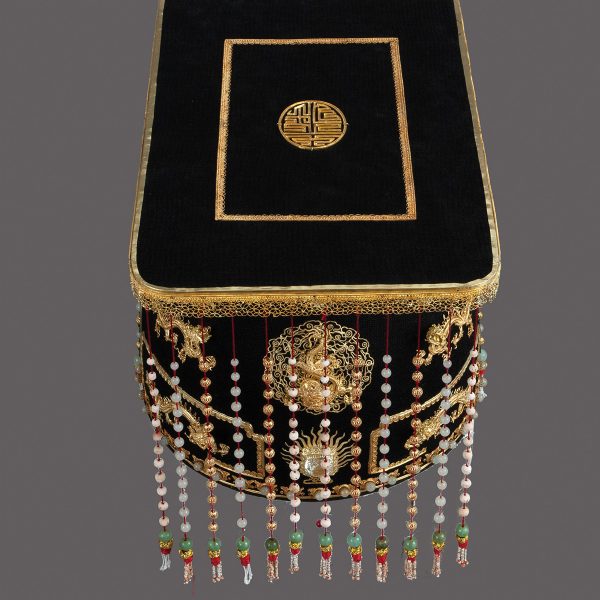Volume 1, Issue 2, May-June 2020.
The Preservation and Restoration of
Four Emperors’ Ceremonial Hats
Dr. Nguyen Dinh Chien and Dr. Nguyen Van Cuong
National Museum of Vietnamese History
On the afternoon of 30 August, 1944, at the Ngo Mon Gate of ‘Lau Ngu Phung’, Bao Dai, the last Emperor of the Nguyen Dynasty, declared to around 50 000 people in Hue, the capital of the kingdom, that he was abdicating. He handed over the royal seals and swords to a revolutionary government representative. On behalf of the new government, Tran Huy Lieu received these precious objects, and awarded a medal signifying ‘Citizen of the Democratic Republic of Vietnam’ to the former Emperor. After that, the royal seals and swords were moved to Hanoi for the meeting of the ‘Independence Day Declaration’ on 2 September, 1945. The feudal regime ended in Vietnam with the August Revolution in 1945. The royal seals and swords no longer belonged to the Nguyen Dynasty, but instead became the property of the Vietnamese People’s Republic, precious objects with a great historical significance, but also excellent works of art in themselves.
The archives of the National Museum of Vietnamese History record in the notebooks of the ‘register of precious objects for 1960’ that the collection of precious objects belonging to the Nguyen Dynasty was kept in the special depot along with golden, silver, jade and ivory artifacts. Almost all of them had belonged to the king or had been royal goods (Nguyen Dinh Chien, Pham Quoc Quan, Nguyen Cong Viet, 2009: pp.13-14). Notable among these artifacts were the Emperors’ ceremonial hats that had belonged to emperors, and the royal seals, swords, head ornaments1 and golden books. The Vietnamese Ministry of Finance gave that collection to the National Museum of Vietnamese History on 17 December, 1959.
After their arrival in 1961, the National Museum of Vietnamese History had to choose some royal artifacts to present in the Museum’s exhibitions. Unfortunately, because security conditions were not ideal at that point, the seal ‘Hoang Hau Chi Bao’ (a Queen’s seal) was stolen by thieves. It is one of two golden seals that belonged to Queen Nam Phuong. Following that incident, for security reasons, the precious objects of the Nguyen Dynasty were moved to the State Bank of Vietnam for safekeeping.
In 2007, the National Museum of Vietnamese History received these precious objects back from the State Bank of Vietnam. On the Great Anniversary Festival ‘1000 years of Thang Long – Hanoi’ of 9 October, 2010, the National Museum of Vietnamese History made a selected presentation of ‘Imperial Treasures’. Among these precious imperial objects there were four Emperors’ ceremonial hats (head ornaments) upon which preservation and restoration work had been carried out by the conservators and researchers at the National Museum of Vietnamese History.
As a result of these artifacts being preserved in hermetically sealed trunks for nearly half a century during the Vietnam War, they were damaged and had deteriorated badly. The four Emperors’ ceremonial hats had been packed into two cloth bags that were stored in a zink trunk. When the two bags were opened, the Council of the National Inventory of Assets confirmed that:
– The first bag (60-862:a) was labelled: one Emperors’ ceremonial hat for imperial audience with 700 pieces of detail. They include many artifacts: a dragon face, Hot Thong Thien, Bac Son, dragon shapes with five claws, whirl tails, flame shapes with some crystals which were attached to the centre, and golden flower shapes with jade stamens, golden branches and leaves with cloud motifs and many precious jade stones attached with a lot of wires.3 – The second bag (60-862:b, c, d) was labeled: three Emperors’ ceremonial hats for imperial audiences with 1400 pieces of detail. They include: a large dragon face, Hot Thong Thien, Bac Son, dragon shapes with five claws, whirl tails; golden flower shapes with jade stamens and hundreds of precious multi-coloured jade stones which were attached with a lot of wires.
The golden details in the two bags were curved, deformed, unconnected and mixed, the boards were worm-eaten. Termites had destroyed many tortoiseshell artifacts, golden flower shapes with jade stamens, golden branches and leaves. Many wires had been glued, but were unconnected. At that point there were a lot of golden branches and leaves with cloud motifs and many precious jade stones were broken. In all probability, prior to their storage in the two cloth bags, the four Emperor’s ceremonial hats had been dismantled in an unprofessional way and partly destroyed, but just the same, there were golden and stone materials.
Both the royal Swords and the Emperors’ ceremonial hats are artifacts symbolizing the power of the Divine Son of Heaven: the Emperor. For this important reason, the National Museum of Vietnamese History organized preservation and restoration of the four Emperors’ ceremonial hats. A council and two groups were formed2 of specialists, historians, archaeologists, master silver and goldsmiths, jewellers, including Vu Kim Loc from Ho Chi Minh City, a scientific council, a consultative group and finally a project group to organize and execute the preservation, conservation and restoration works. After a half of year, these groups studied and researched a lot of historical documents, ancient hats and head ornament styles in the museums, temples and communal houses in the villages of Hanoi and Ha Tay provinces. The groups collected many important images, such as Xung Thien’s hat, from the 18th century Trinh Lords and some head ornament styles in communal houses in Thuong Dong (Le Mat, Mai Phuc, villages in Long Bien District, Hanoi). These documents and images demonstrated an arranged system of dragons, clouds, branches and leaf shapes in decoration. The common structure of these motifs are a well-matched layout of dragon shapes and flower shapes fixed in bands.
The project group visited Hue, the old capital of the kingdom, to investigate and study archaeological sites and museum materials and historic documents. At the Museum of Hue, the group found the core of the hat. Its material includes small bronze strings, red and black silk splinters. Technicians and jewellers in particular carefully researched the Emperors’ ceremonial hat for imperial audiences that belonged to King Khai Dinh. That crown hat had been worshiped in his royal tomb. This was precisely the authentic, historical specimen that was required for the preservation and restoration of the Emperors’ ceremonial hats belonging to the emperors of the Nguyen Dynasty held in the National Museum of Vietnamese History. All this research work was permitted under the responsibility for restoration work to the Ceremonial Head Ornaments of the Nguyen Emperors.
The restoration project detailed concrete plans:
One important problem was establishing the shape of the crown hats. The information on the size of the rim came from the Bac Son rim, and the top of the crown hat. Its weight could be calculated From the rim size of the hat’s profile. Finally, in the choice of the eventual shape of the Emperors’ ceremonial hat, the technicians manufactured 56 wooden and sponge hat specimens.
After that, the group wove the hat’s core from bronze threads (approximately 0.26 mm in diameter). Initially this was based on hat’s core knit, but the result was unsatisfactory. After many discussions and improvements, the specialists manufactured a loom that was similar to those used in weaving fabric. Then bronze pieces were woven and joined with cores of the hats. Each piece weighed about 150 grams. The inside was then covered with black and red silk on the outside of the bronze core. Those silk pieces were resilient and manufactured by artisans from Van Phuc village (Ha Dong District).
The work of creating suitable and harmonious decorative motifs with the arrangements of Nguyen Dynasty decoration were complicated and very time-consuming. The discussions, suggestions, contributions of historians, archaeologists, goldsmiths and artisans brought the desired results and great success after 11 months. Three of the restored Emperors’ ceremonial hats have the same shape, the only differences are in the decorative motifs, and a name has been given to each one: Emperor’s ceremonial hat numbers 1, 2 and 3. These Emperors’ ceremonial hats were used by the Kings during imperial audiences.
The Binh Thien Emperor’s ceremonial hat was used when the King went to ceremonies and festivals in the spirit of Nam Gao. It was named crown hat number 4.
Emperors’ ceremonial hat number 1
It weighs 769 grams. The details on the hat are sophisticated and made of gold, jade and crystal. At the front there are two Hot Thong Thien. These are decorative lotus petal shapes and are fixed by the jade stamens of two golden flowers on a golden cloud base. The forehead of the Emperor’s ceremonial hat is a ‘bow back’ shape. Outside there is a band of jade flowers. Every precious jade stone is a white-grey colour ball covered by small golden petals. The inner fringe is a ‘bodhi leaf’ decorative band—a common decorative motive in ancient Vietnamese art. There are also four dragon shapes at the forehead (alternately two pairs together, symmetrical and flame shapes with some crystal were fixed at the centre). Centre of the forehead is a precious round jade stone with a flower and leaf decoration. The rim of Bac Son was woven with golden threads. It was decorated with two pairs of dragon-fish on the bottom corners. Alternately on the surface of the Bac Son were a couple of flying dragons, and a couple of landing dragons, and three shapes on a golden cloud base were attached. On the rim of the Bac Son there are eight dragon shapes divided up in four pairs. These dragons face a central dragon shape and six flame shapes, and a mass of cloud on the base of the rim. On the edge of the hat there is a symmetrical flower-leaf motive and lianaleaf motive attached to a string of decorated golden flowers with jade stamen shapes.
On the reverse of the Emperor’s ceremonial hat a large dragon’s face is in the plaque shape with the word Nham.4 The two eyes of the dragon are represented by two flowers with crystal stamens. The rim surrounding the dragon face is a band of golden flowers with jade stamens. Above the dragon face are two Hot Thong Thien in a petal shape. Every face of Hot Thong Thien was attached with five golden flowers with jade stamens and a couple of flying dragons to a flame shape on a brocade base with the word Van. On each side of the Hot Thong Thien there are three flying dragon shapes, a landing dragon shape, two flower leaf branches, four flame shapes and some big and small masses of clouds.
Emperors’ ceremonial hat number 2
It weighs 755 grams. This hat is similar in form to hat number 1; however, there are some differences. At the front of this Emperors’ ceremonial hat there are two gathered dragon shapes, but there are no bands of golden flowers with jade stamens. On the decorative rim there is no ‘bodhi leaf’ decoration, but there is a band of pointed leaf decorations. On the forehead of the hat there are only a couple of gathered dragon and flame shapes.
On the rim of the Bac Son, there are two pairs of pursuing dragons and five flame shapes. In the corner of the Bac Son there are no pairs of dragon-fish. On the Bac Son rim there are eleven dragon shapes including 10 flying dragon shapes, one rolling dragon shape and some plaque cloud shapes. The decorative motif on the edge of this crown hat is different from the motifs on Emperor’s ceremonial hat Number 1: there is no flower leaf decoration, but there are a couple of gathered dragons on golden clouds on a semi-oval base. On the reverse of the Emperors’ ceremonial hat there is a large dragon face in a plaque shape and two Hot Thong Thien petal shapes. In general, the decoration on the rim is similar to that of Emperors’ ceremonial hat number 2. On each side of the Hot Thong Thien there are six flying dragon shapes and ten flame shapes and masses of clouds.
Emperors’ ceremonial hat number 3
It weighs 755 grams. This hat is similar in form to hat number 1; however, there are some differences. At the front of this Emperors’ ceremonial hat there are two gathered dragon shapes, but there are no bands of golden flowers with jade stamens. On the decorative rim there is no ‘bodhi leaf’ decoration, but there is a band of pointed leaf decorations. On the forehead of the hat there are only a couple of gathered dragon and flame shapes.
On the rim of the Bac Son, there are two pairs of pursuing dragons and five flame shapes. In the corner of the Bac Son there are no pairs of dragon-fish. On the Bac Son rim there are eleven dragon shapes including 10 flying dragon shapes, one rolling dragon shape and some plaque cloud shapes. The decorative motif on the edge of this crown hat is different from the motifs on Emperor’s ceremonial hat Number 1: there is no flower leaf decoration, but there are a couple of gathered dragons on golden clouds on a semi-oval base. On the reverse of the Emperors’ ceremonial hat there is a large dragon face in a plaque shape and two Hot Thong Thien petal shapes. In general, the decoration on the rim is similar to that of Emperors’ ceremonial hat number 2. On each side of the Hot Thong Thien there are six flying dragon shapes and ten flame shapes and masses of clouds.
Emperors’ ceremonial hat number 4
It weighs 755 grams. This hat is similar in form to hat number 1; however, there are some differences. At the front of this Emperors’ ceremonial hat there are two gathered dragon shapes, but there are no bands of golden flowers with jade stamens. On the decorative rim there is no ‘bodhi leaf’ decoration, but there is a band of pointed leaf decorations. On the forehead of the hat there are only a couple of gathered dragon and flame shapes.
On the rim of the Bac Son, there are two pairs of pursuing dragons and five flame shapes. In the corner of the Bac Son there are no pairs of dragon-fish. On the Bac Son rim there are eleven dragon shapes including 10 flying dragon shapes, one rolling dragon shape and some plaque cloud shapes. The decorative motif on the edge of this crown hat is different from the motifs on Emperor’s ceremonial hat Number 1: there is no flower leaf decoration, but there are a couple of gathered dragons on golden clouds on a semi-oval base. On the reverse of the Emperors’ ceremonial hat there is a large dragon face in a plaque shape and two Hot Thong Thien petal shapes. In general, the decoration on the rim is similar to that of Emperors’ ceremonial hat number 2. On each side of the Hot Thong Thien there are six flying dragon shapes and ten flame shapes and masses of clouds.
Notes
(1) The ceremonial Emperor’s hats (there are two Hot Thong Thien) that emperors used in great ceremonies such as: coronations, audiences, festivals, etc. Similar crowns have been published for example in Tam Tai Do Hoi book (Ming dynasty, China). The crown hat’s decorations for the Nguyen Dynasty were published as regulations in Kham Dinh Dai Nam Hoi Dien. The crown hats belonging to the emperors had artistic, symbolic, religious and military characteristics (Vien Phoc Dau, Keo Vong, Ho Dau, Kim Khoi hats-Trinh Bachm2010:1).
(2) The president of this scientific council is Prof. Dr. Luu Tran Trieu, the other members are Prof. Dr. Dang Van Bai, Prof. Dr. Nyuen Quoc Hung, Prof. Dr. Le Thi Minh Ly, Prof. Dr. Nguyen Thuy Hop. The project group members are Dr. Pham Quoc Quan, Dr. Nguen Dinh Chien, Vu Quoc Hien, Dinh Van Thin, Ha Van Loan, Trinh Thi An, nguyen Manh Ha, Nguyen thi Huong Thom, Dao le QueHuong, Dinh Ngoc Trien, and two goldsmiths Vu Kim Loc and Tran Minh Tri.
(3) Decorative jade for the crown hats includes Thuy Soan, Hoa Te and White jade. Thuy Soan is a natural high quality rock crystal, but not a diamond. Tuy Soan stones, quartz and garnet also decorated the Emperor’s and Queen Mother’s hats. (Trinh Bach, 2010:1).
(4) There is one interpretation of the word ‘Nham’. Some scholars in Hue believe that it means ‘Good omen’.
Reference
Nguyen Dinh Chien, Pham Quoc Quan, Nyuen Cong Viet: Royal Seals of the Nguyen Dynasty in Vietnam, Ha Noi, 2009. Nguyen Manh Ha: Restoration of the Nguyen Dynasty’s Precious Objects, Scientific Information, Ha Noi, 2010. Trinh Bach: Some Opinions on the Collection of Nguyen Dynasty Emperors’ Ceremonial Hats, Exchange of letters, October 2010.
